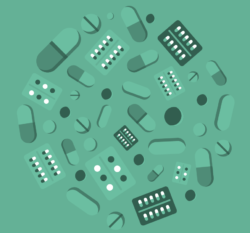Outputs & Impact: Tackling AMR in Schools
Our outputs
Students and teachers decided we would need to create more than one resource to allow students in Nepal to learn about AMR and teachers to confidently lead sessions on the topic.
In our initial focus groups, students and previous CARAN project participants really wanted to have as much creativity as possible in the resources.  However they then realised that AMR was a big and very new topic. So they decided a booklet of different activities and resources would be the best idea. Researchers at Leeds and HERDi developed these ideas into our resource pack and AMR playing cards (below).
However they then realised that AMR was a big and very new topic. So they decided a booklet of different activities and resources would be the best idea. Researchers at Leeds and HERDi developed these ideas into our resource pack and AMR playing cards (below).
The teachers were also very excited to learn and teach on a new topic. They also wanted to be creative, thinking about methods such as street drama and art. However, when we tested initial AMR lesson plans we teachers they found the topic complicated, new and a bit daunting. So we decided to create a full facilitation manual that was teacher-facing. This would enable teachers to learn at their own pace and plan their own priming session on AMR before using the full resources.
Our Impact
We will shortly be sharing the results of a field test of these resources. We worked with 60 students who had not been involved in the co-design of the pack. They completed a pre- and post-intervention survey on AMR knowledge and we found knowledge scores to increase after using our pack to learn about AMR.
We will also share qualitative feedback from our co-design partners who have been involved in the project from the start. Teachers have been challenged to consider new ways of working and students have been given a co-creation role in the development of their educational materials - what has this meant to them?
We are now working with more Nepali schools and local education officials to test the programme more widely to understand it's strengths and limitations.
